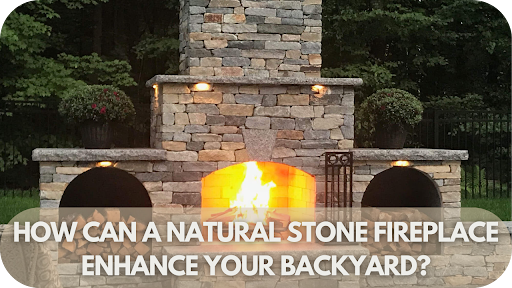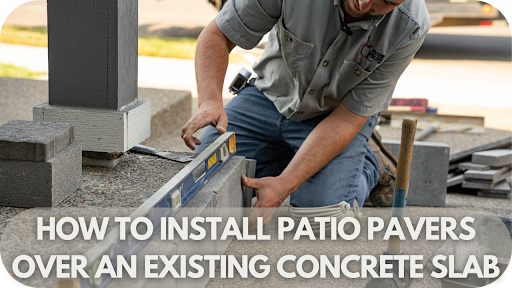Does Travertine Need to Be Sealed?
Travertine’s natural beauty makes it a standout choice for floors, patios, and wall cladding. However, its porous surface can quickly turn from elegant to problematic when exposed to moisture, stains, or wear.
The solution lies in sealing. A proper seal protects the stone, enhances its durability, and preserves its stunning appearance. Without it, your travertine may lose its charm sooner than expected.
Ready to safeguard your investment? Let’s explore why sealing travertine is essential and how it ensures your surfaces stay beautiful for years to come.
Does Travertine Need to Be Sealed?
Yes, travertine needs to be sealed to protect its porous surface from stains, water damage, and erosion. Sealing creates a protective barrier that prevents moisture and debris from penetrating the stone, ensuring its durability and appearance. Regular resealing, especially in high-moisture areas, preserves travertine’s natural beauty and extends its lifespan.
Why Sealing Travertine is Essential
Travertine is a natural stone celebrated for its timeless beauty. Sealing travertine is crucial for maintaining its durability and functionality. Below are the key reasons why sealing your travertine surfaces is a must.
1. Prevents Stains
Travertine’s porous surface absorbs liquids like water, oil, and wine, which can cause unsightly stains. Sealing creates a protective barrier that repels spills, ensuring they don’t penetrate the stone and leave permanent marks, keeping your surfaces looking clean and pristine.
2. Protects Against Water Damage
In moisture-prone areas like bathrooms, kitchens, or outdoor patios, water can seep into travertine, leading to erosion, mould, and structural weakening. Sealing prevents water absorption, protecting the stone from long-term damage and ensuring its durability in high-moisture environments.
3. Enhances Durability
Sealing strengthens the stone’s resistance to wear and tear caused by heavy foot traffic, weather exposure, or daily use. It prevents pitting, cracking, and surface erosion, ensuring the stone remains structurally sound and visually appealing for years.
4. Maintains Aesthetic Appeal
A quality sealant enhances the natural colours and textures of travertine, giving it a richer, more vibrant appearance. Sealing also prevents dullness caused by dirt or moisture, keeping the stone’s rustic charm intact.
5. Simplifies Maintenance
Sealed travertine is easier to clean and maintain, as dirt and debris remain on the surface instead of settling into the pores. This reduces cleaning time and prolongs the stone’s polished appearance.
Signs That Travertine Needs Resealing
Travertine’s protective seal wears down over time, leaving it exposed to moisture and stains. Here are the key signs that indicate it’s time to reseal your travertine surfaces:
- Water Absorption: If water no longer beads on the surface and instead soaks into the stone, the sealant has deteriorated. Resealing prevents moisture from causing stains or long-term damage.
- Dark Spots or Stains: Stains that appear after spills show liquids are penetrating the surface. Resealing strengthens the barrier, protecting the stone from permanent discolouration and unsightly marks.
- Dullness or Fading: Travertine that appears faded or lacks its natural shine, especially in high-traffic areas, signals that the sealant has worn away. Resealing restores the stone’s rich, vibrant tones.
- Easier Dirt Build-Up: If dirt, dust, or grime settles into the stone and cleaning becomes difficult, the sealant is compromised. Resealing creates a smooth, protective layer for easier maintenance.
- Surface Feels Rough or Uneven: A rough or textured feel may indicate erosion from water exposure. Resealing strengthens the surface, preventing further deterioration and preserving the stone’s integrity.
- Increased Susceptibility to Etching: Acidic substances like wine or citrus can cause etching on unsealed travertine, leaving dull spots or marks. Resealing provides a barrier that protects against chemical damage.
Types of Sealers for Travertine
Choosing the right sealer is key to protecting travertine’s natural beauty and ensuring its long-term durability. Below are the main types of sealers to consider for your travertine surfaces:
1. Penetrating Sealers
Penetrating sealers absorb deep into the stone, creating an invisible barrier that repels water, stains, and dirt. They do not alter the stone’s appearance, making them ideal for those who prefer a natural, matte finish. Perfect for both indoor and outdoor spaces, they allow the stone to breathe naturally.
2. Topical Sealers
Topical sealers form a protective layer on the stone’s surface, offering excellent resistance to stains and abrasions. They enhance the stone’s appearance with a glossy or satin finish, deepening its natural colour. However, they require more frequent reapplication, especially in high-traffic areas.
3. Enhancing Sealers
Enhancing sealers not only protect travertine from moisture and spills but also enrich and deepens its natural tones. They highlight the stone’s colour variations and textures, adding vibrancy to both indoor and outdoor installations.
4. Water-Repellent Sealers
Water-repellent sealers are ideal for areas exposed to moisture, such as bathrooms, kitchens, or pool surrounds. They provide strong water resistance, preventing absorption that can lead to stains, erosion, or mould growth.
When Should You Seal Travertine?
Sealing travertine at the right time is essential to protect its natural beauty and ensure its longevity. Below are the key scenarios when sealing is necessary:
1. Immediately After Installation
The most critical time to seal travertine is right after installation. During this process, grout, moisture, and construction debris can penetrate the stone’s porous surface. Sealing immediately creates a protective barrier, preventing stains, discolouration, and long-term damage before it has a chance to occur.
2. In High-Traffic Areas
Floors, hallways, and outdoor patios are subject to constant foot traffic, which can wear down the sealant over time. Resealing travertine in high-traffic areas every 1–2 years helps maintain protection against dirt, scuff marks, and stains, ensuring the stone’s durability and polished appearance remains intact.
3. In Moisture-Prone Spaces
Bathrooms, kitchens, and pool surrounds are exposed to regular moisture and humidity. Without sealing, water can seep into the stone, causing erosion, mould growth, and structural weakening. Regular resealing in these areas prevents water damage and keeps the travertine strong and clean.
4. When the Sealant Wears Off
If you’re unsure whether the seal is intact, perform a water bead test. Place a few drops of water on the stone; if the water soaks in instead of beading up, it’s time to reseal to restore protection and prevent damage.
How to Seal Travertine: A Step-by-Step Guide
Sealing travertine doesn’t have to be complicated. Follow these simple steps to protect your stone, enhance its beauty, and ensure it stays durable for years to come.
Step 1: Clean the Surface
Before sealing, thoroughly clean the surface using a pH-neutral, stone-safe cleaner. Remove all dust, dirt, and stains to ensure the sealant adheres evenly. Allow the surface to dry completely for optimal results and long-lasting protection.
Step 2: Choose the Right Sealer
Select a sealer suited to your needs. For high-moisture areas like bathrooms or outdoor spaces, a penetrating or water-repellent sealer works best. If you prefer enhancing the stone’s colour, opt for an enhancing or topical sealer.
Step 3: Apply the Sealer
Using a clean brush, roller, or sprayer, apply a thin, even coat of sealant across the surface. Work in sections to ensure full coverage. Avoid over-application, as excess sealer can create streaks or a cloudy finish.
Step 4: Allow to Dry
Let the sealant penetrate and dry completely according to the manufacturer’s instructions. This typically takes a few hours. Avoid walking on or using the surface until the sealant has fully cured to maximise its effectiveness.
Step 5: Test the Seal
Once dry, check the seal’s effectiveness by dropping water onto the surface. If the water beads up, the seal is intact. If it soaks in, apply another thin coat to restore full protection against moisture and stains.
Common Mistakes to Avoid When Sealing Travertine
Sealing travertine is essential to protect its beauty, but common mistakes can undermine the process. Avoid these errors to ensure long-lasting protection and a flawless finish:
- Skipping Surface Preparation: Failing to clean the travertine thoroughly before sealing traps dirt, dust, and stains beneath the sealant, leading to an uneven or discoloured surface. Always clean with a pH-neutral cleaner and allow it to dry completely.
- Using the Wrong Sealer: Applying an inappropriate sealer can ruin the stone’s appearance or fail to offer protection. Choose penetrating sealers for a natural look, enhancing sealers for richer colour, or water-repellent options for moisture-prone areas.
- Over-Application of Sealer: Too much sealant creates a cloudy, streaky finish. Apply a thin, even coat and remove excess to maintain the travertine’s natural elegance.
- Ignoring Resealing Schedules: Delaying resealing leaves the stone vulnerable to water damage, stains, and erosion. Reseal every 1–2 years, especially in high-traffic or moisture-rich areas.
- Using Harsh Cleaners: Acidic or abrasive cleaners can strip the sealant and damage the stone. Always use gentle, stone-safe products to maintain the protective barrier.
Conclusion
Sealing travertine is essential to protect its natural beauty, prevent stains, and ensure long-term durability. With the right sealer and regular maintenance, your travertine surfaces will remain stunning and resilient for years to come.
Ready to preserve and enhance your travertine? At Splendour in Stone, we offer premium travertine solutions and expert advice to help you keep your surfaces in perfect condition. Explore our range today and give your travertine the care it deserves!





